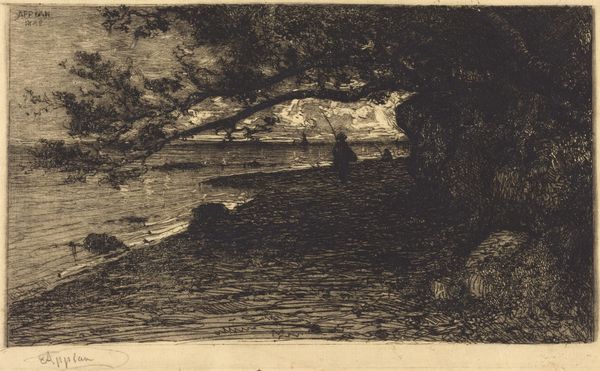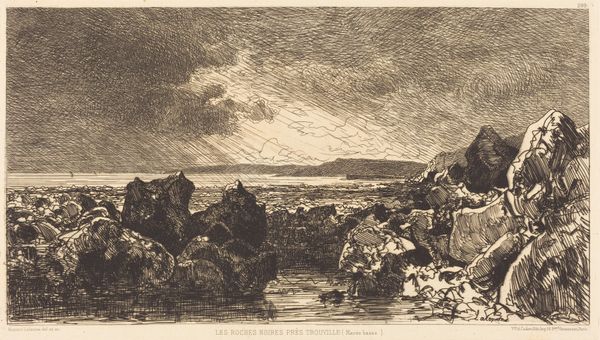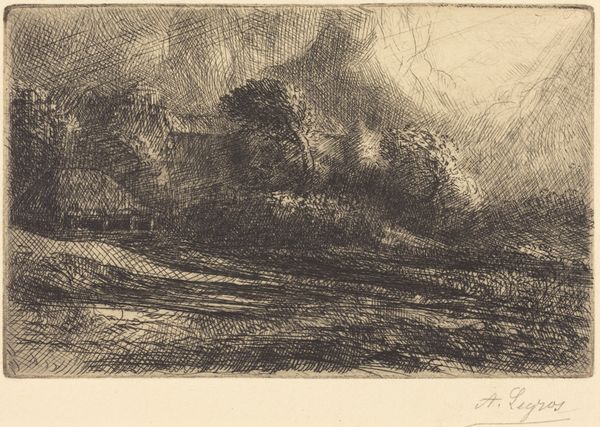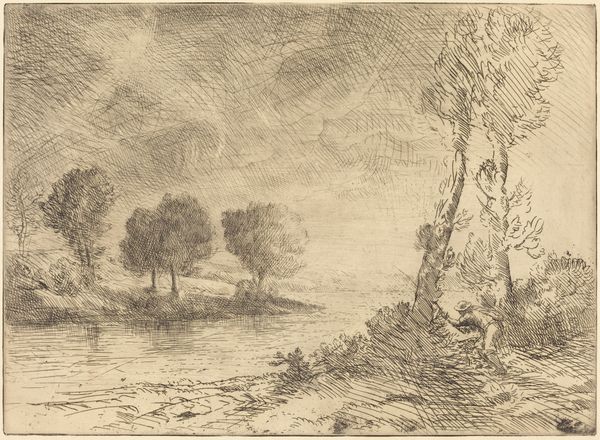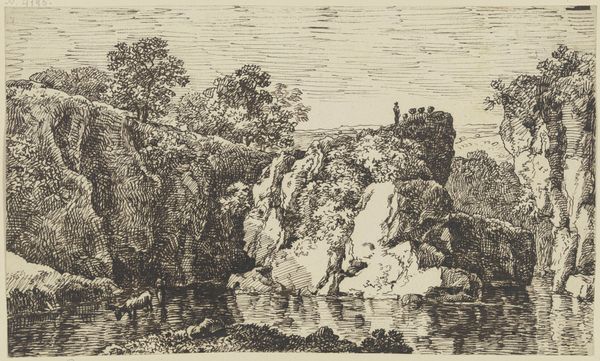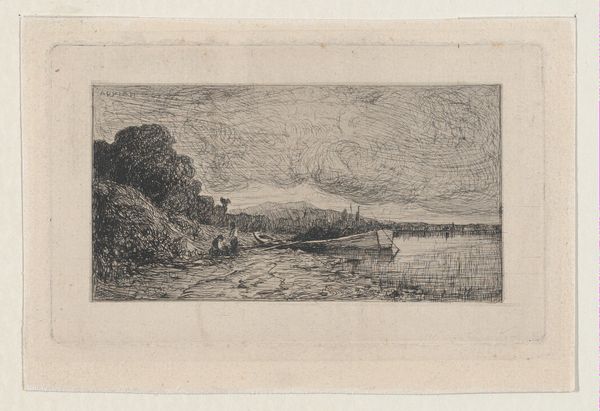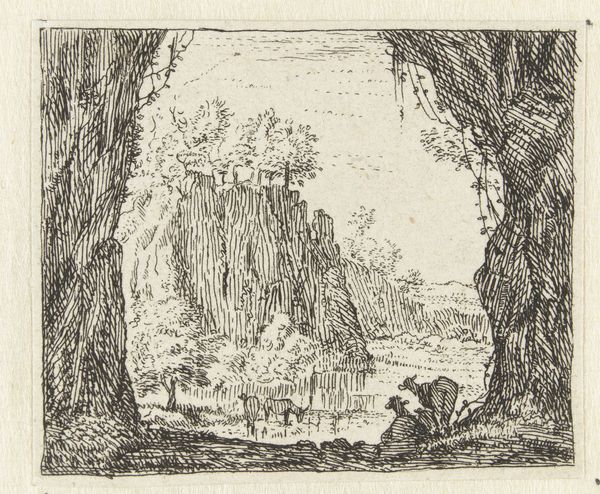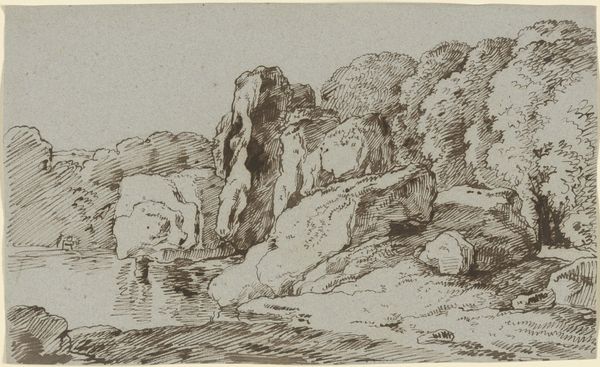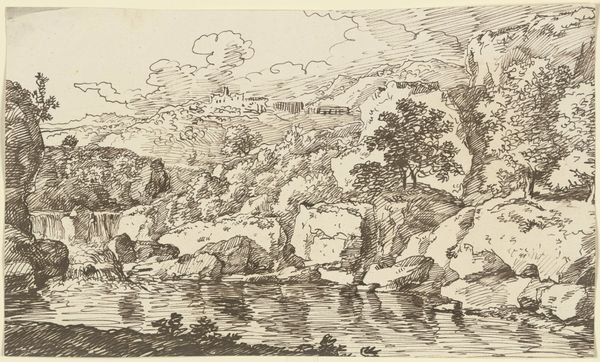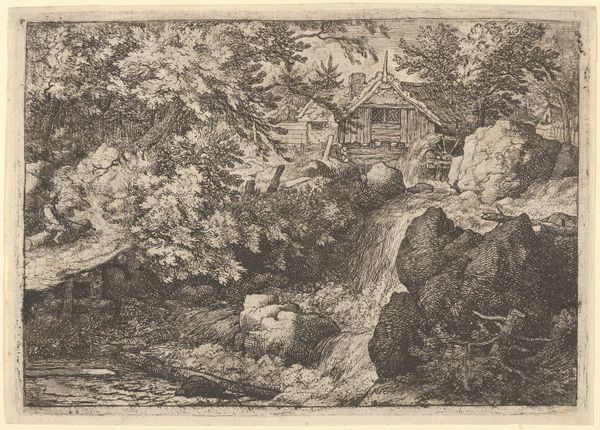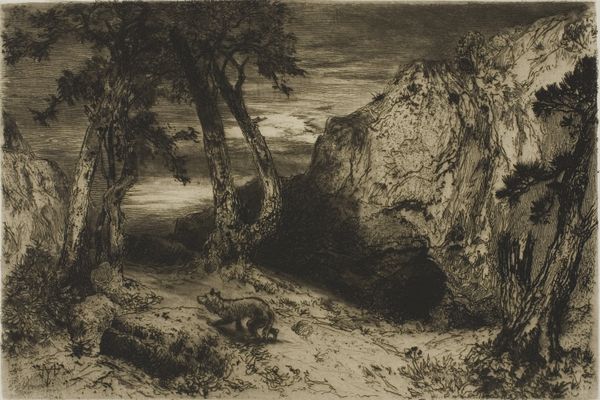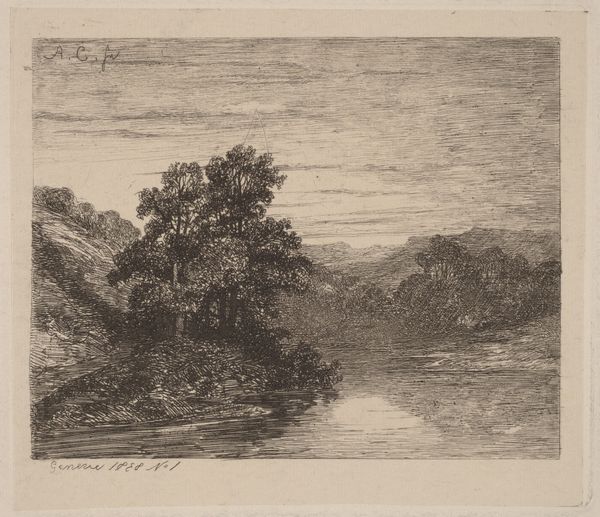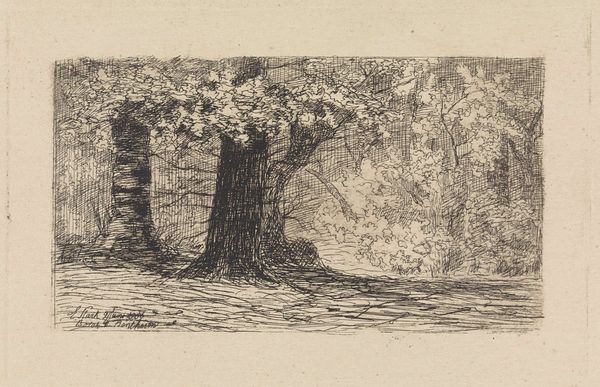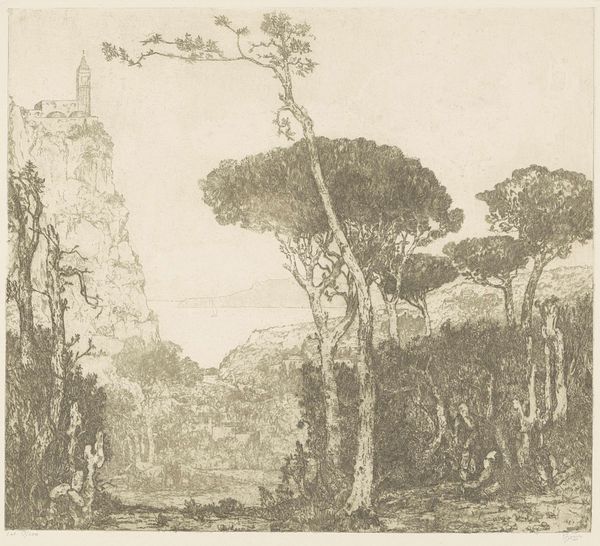
Copyright: National Gallery of Art: CC0 1.0
Editor: This is "Orage à la Fin du jour" by Paul Huet, created in 1868. It’s an etching, a print, depicting a stormy landscape. I’m struck by how… moody it is. The dark sky really sets a dramatic scene. What do you see in this piece? Curator: I see a symbolic crossroads. The bridge and the figure on horseback represent journeys, literal and metaphorical. Consider the emotional weight carried by depictions of storms throughout art history - often mirroring internal turmoil or societal unrest. Notice how the artist uses the etching technique to create this feeling. Editor: The storm definitely conveys unrest. What about the bridge itself? It looks almost…forgotten. Curator: Precisely! Bridges often signify connection, but here, in disrepair and shadowed by the coming storm, it may suggest fractured relationships or interrupted progress. What about the solitary rider? How do you think their placement impacts the symbolism? Editor: They're quite small against the vastness of the landscape. Makes me think about the insignificance of an individual facing nature’s power. A classic romantic theme. Curator: Exactly. This echoes the Romantic era’s preoccupation with the sublime, emphasizing nature’s awe-inspiring, potentially destructive force and its reflection on human emotions. The artist is tapping into cultural memory surrounding weather, travel and our emotional vulnerability. Editor: That makes a lot of sense. Seeing all of those elements together—the rider, the bridge, the storm—changes how I initially viewed the image. Thanks! Curator: My pleasure. Discovering those connections between symbols and collective cultural experience is something truly fascinating!
Comments
No comments
Be the first to comment and join the conversation on the ultimate creative platform.
